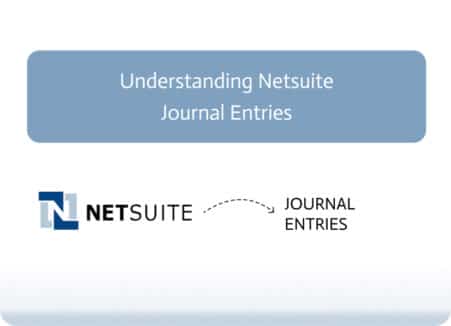

Document Generation Tools: Your Guide to Never Copy-Pasting Again
Picture this, it’s 4:47 PM on a Friday, and you’ve just realized you need to send out 50 personalized proposals by end of day. You’re suddenly starting to hyperventilate because you know what’s coming…hours of copying customer names, pasting product details, updating pricing tables, and praying you don’t accidentally send Client A’s proposal to Client B. Again, and that’s where document generation tools come to the rescue.
You click a button. Fifty perfect proposals generated automatically, each one customized with the right customer details, correct pricing, appropriate terms, and your company’s beautiful branding. You review them, hit send, and you’re out the door by 5:15 PM with time to spare.
That’s the magic of document generation tools, and they’re more than just software, they’re a way out of tedious document work, a way to look super organized, and a chance to actually leave the office on time.
What Are Document Generation Tools, Really?
Let’s skip the corporate jargon. They’re basically smart assistants that create dynamic documents for you. You set up a template once, connect it to wherever your data lives, like your CRM and spreadsheets or wherever it may be, and then the tool does the boring work of filling everything in accurately, formatting it beautifully, and making sure nothing looks like a robot made it.
Here, the word “tool” is extremely important. You can easily customize the documents by adding variables like names or dates to suit your business needs, and you can create editable templates to determine the final document’s structure, format, and content.
The finest feature? Most of them don’t require technical expertise to use. You’re already qualified if you know how to use a Word template and comprehend simple “if this, then that” reasoning.
Features That Matter in Document Generation Tools
When you’re shopping for document generation tools, vendors will bombard you with feature lists that sound impressive, but they may not even be that useful or fit your actual needs.
Let’s talk about what really counts.
Templates That Don’t Fight You
Your templates should be simple to make and even a little easier to edit. Try to find out tools that allow you to build templates in well-known formats such as Word, Excel, PowerPoint, or even HTML if you know how to use the web. A visual editor that allows you to drag and drop data fields without doing any coding is an added bonus.
Likewise, the template ought to be intelligent enough to cope with variations. Your template should instinctively adjust according to basic rules you specify if enterprise clients require different contract terms than small businesses or if certain markets call for special compliance language.
Integration That Actually Works
Something you can’t take for granted is that if your document generation tool can’t talk to your other systems, it’s basically useless. Those that use role-based rights, conditional logic, and predefined standards in your document automation software to reduce human intervention and optimize processes.
Your tool needs a connection to wherever your data actually lives, which, for most businesses, that’s their CRM (Salesforce), their ERP system, their project management tools, and a few industry-specific platforms. Pre-built integrations are your friend here, and they work right away without requiring a build of custom connections.
And please, make sure the integration is two-way. Data should flow into your documents, and document status should flow back into your systems. When a customer signs a contract, it auto-updates the deal status in your CRM, not creates another manual task.
Automation That Feels Like Magic
The whole point of document generation tools is automation, but not all automation is created equal.
You want a solution that can generate documents with triggers for when a deal closes, when an employee is hired, when an invoice is due, or when a contract is expiring. You shouldn’t have to recall to make these documents; the system should just do it and notify the right people.
Batch processing is one of the key factors as well. If invoices for 500 customers are needed at month-end, the tool easily generates them as if it were just one invoice. The same applies to employee onboarding packets, customer reports, or any other high-volume document workflow.
Security You Can Actually Trust
Let’s be real: these tools are handling your most sensitive business information. Customer info, employee info, and personal pricing. It’s all flowing through the document generation system.
Enterprise-grade encryption, validation, and adherence are necessary security features, and tools that provide traceability, restricted control over permissions, and multi-factor authentication are available. HIPAA compliance is a must for anyone working in the healthcare industry.
Don’t just take the vendor’s word for it, you must ask to see their security documentation. If they won’t share that information with serious prospects, that tells you everything you need to know.
Analytics That Tell You Something Useful
Apart from drafting documents, good document generation tools should also keep you up to date with their progress. Stats such as how many documents are being created, user activity, and delivery status should be part and parcel and come in thorough reports so that you can pinpoint problem areas and streamline the whole process.
You want to know: How many documents are you generating? Which templates are most used? Where are documents getting stuck in approval workflows? Which customers aren’t opening your proposals? How long does it take from generation to signature?
As time goes on, these little insights streamline procedures. Should a template contain a confusing section that requires constant revision, if you fix it once, all subsequent documents will be improved. If you observe that proposals sent on Tuesdays are opened more quickly than those sent on Fridays, you can use this information to better schedule your proposals.
Types of Document Generation Tools
Every tool isn’t right for every situation, unless you’re using Noca, of course. Here’s a quick guide to matching tools to needs.
The Complete Solution
The goal of Noca is to manage the complete document lifecycle, including creation, approvals, signatures, storage, and data analysis. Noca prioritizes obtaining value fast, visual builders, and simple integrations.
Ideal for: Businesses with complicated methods, groups combining several tools, and circumstances needing a high level of supervision, custom app usage.
The Sales-Focused Tools
Sales teams are the target audience for programs like DocuSign and PandaDoc. They are excellent at contracts, quotes, and proposals, and they have solutions for monitoring client interaction (Did they open it? What were the longest passages they read? and gathering electronic signatures.
Recommended for: Sales teams, documents that are seen by customers, and anything that needs signatures
Be aware that they might not be able to manage more technical solutions or high-volume or challenging backend integrations.
The Developer-Friendly Platforms
Tools designed for organizations with development resources include Docmosis and Apryse. They give you stable APIs that offer loads of customization choices and the option to incorporate document generation straight into your apps.
Recommended for: Software firms, businesses using custom apps, and circumstances that require expert control
Watch out for: More steps to learn, which ought to be carried out and upheld by experienced users.
The Basic Automation Instruments
The aim of services like Docupilot and Formstack Documents is to make automation understandable to non-technical users.
Recommended for: Teams without specialized support, small to medium-sized enterprises, and those just beginning document automation
Be aware that extremely complex needs or large-scale projects could face limitations.
Red Flags When Document Generation Tools
Not all document generation tools will give you what you need, except one, Noca! But here’s what should make you pause and ask hard questions:
- “Unlimited Customization” Without Explaining How: This usually means you’ll need a developer for every change. Ask for examples of how your team would make changes.
- Integration Lists That Look Suspiciously Long: Some vendors count all connections made using Make or Zapier as “native integrations.” Be sure to inquire about the systems you use and the real data flow.
- Security Without Certifications: If they mention security but won’t show you SOC 2 reports or compliance documentation, be skeptical. Real security has receipts.
- Pricing That Starts “As Low As…” Without Real Numbers: This usually means the advertised price doesn’t include necessary features. Ask for the entire price and features you actually need.
- No Clear Answer on Data Residency: If you’re subject to regulations about where data is located and industry-specific requirements, the vendor needs clear answers about data location and sovereignty.
Making The Smart Choice With Document Generation Tools
Here’s a process that works, so you don’t get stuck in a never-ending evaluation:
- Start With Your Biggest Pain Point: Don’t try to fix everything in one go. Pick the document workflow that makes your team want to quit, something like its sales proposals, maybe it’s HR onboarding, maybe it’s monthly invoicing, and focus there.
- Real Data Tests: Demo environments with sample data look great. Insist on testing using real data, your actual templates, and your actual integrations. That’s where the truth reveals itself.
- Involve Actual Users: The people who’ll use this tool daily need to test it and give their input. Executive buy-in matters, but if your sales team hates the proposal tool, it won’t get used.
- Calculate Real ROI: How many hours per week does your team spend creating documents manually? What’s that time worth? Compare that to the tool cost and time. The payback period is usually shockingly short.
- Plan for Growth: Pick one that can handle 5x your current volume. You want to scale with the tool, not outgrow it in six months and start over.
Where Noca AI Fits Into Document Generation Tools
Noca is built to give enterprise power without enterprise complexity. It uses AI-driven data mapping that determines your schema automatically, and it connects to more than 500 systems, saving you weeks of work on integration setups.
Businesses can leverage Noca to create and edit templates without submitting IT tickets, and it is strong enough to manage even the most complicated approval workflows, multi-system data pulls, and complicated conditional thinking.
The governance model is what makes Noca unique. Basically, everyone in the organization works in their lane without any hindrances: marketing controls templates, legal approves language, IT oversees integrations, and end users create documents. Furthermore, AI’s capabilities are useful features like context-aware document assembly, automated compliance assessment, and advanced suggestions.
The Bottom Line
Document generation tools shouldn’t be thought of as completely doing away with the judgment or creativity people provide, but more about eliminating the soul-crushing repetitive work that prevents you from using them on things that actually matter.
Choose a document generation tool that easily fits into your systems, matches your team’s technical capabilities, handles your volume comfortably, and provides the security your industry demands. Start with one painful workflow, prove the value, then expand systematically.
The best tool doesn’t always have the longest feature list or the fanciest AI claims. It’s the one your team will actually use day-to-day without even thinking about it, because it just works and makes their jobs easier.
And honestly? Once you’ve experienced generating 50 perfect proposals with a single click and leaving work on time on a Friday, you’ll wonder how you ever did it the old way.


